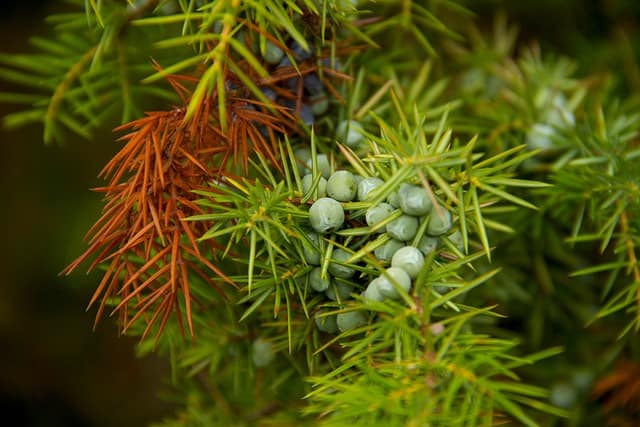Junipers are a popular evergreen shrub that can add year-round color and texture to a garden. However, if you notice your juniper turning yellow, it can be a sign that something is wrong.
There are several reasons why junipers may turn yellow, from nutrient deficiencies to pest infestations and diseases. Understanding the cause of the yellowing can help you take steps to address the issue and prevent further damage to your plant.
One of the main reasons why junipers may turn yellow is due to nutrient deficiencies. Lack of essential nutrients such as magnesium, potassium, and nitrogen can cause the lower half of the plant to yellow, while deficiencies in micronutrients like iron, manganese, molybdenum, and zinc can cause yellowing in the upper half of the foliage.
In addition, overwatering or poor soil conditions can also lead to nutrient deficiencies and yellowing of the plant.
If nutrient deficiencies are not the issue, other factors such as seasonal changes, pest infestations, and diseases may be causing your juniper to turn yellow.
Spider mites, scales, and juniper scale insects are common pests that can cause yellowing of the plant, while fungal diseases such as root rot and twig blight can also lead to yellowing and browning of the foliage.
Proper juniper care, including regular watering, pruning, and fertilizing, can help prevent these issues and keep your juniper healthy and vibrant.
Key Takeaways
- Nutrient deficiencies, pest infestations, and diseases are common causes of juniper yellowing.
- Proper watering and soil conditions, as well as seasonal changes, can also impact juniper health.
- Regular care, including pruning, fertilizing, and pest management, can help prevent yellowing and maintain healthy junipers.
Other popular posts in this category:
Understanding Juniper Yellowing
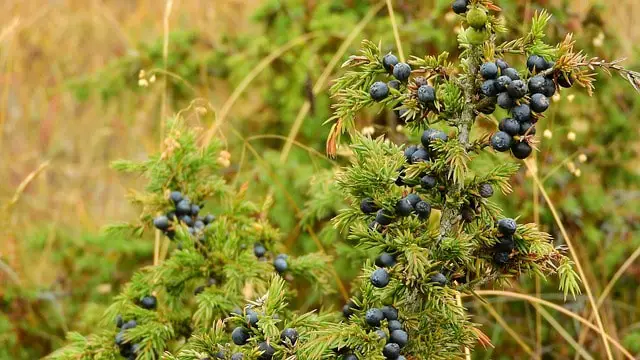
Junipers are popular evergreen shrubs that can add a touch of greenery to any landscape. However, if you notice your juniper turning yellow, it could be a sign of an underlying problem. In this section, we will explore the common causes of juniper yellowing and what you can do to address them.
Identifying Symptoms
Yellowing is a common symptom of juniper issues, but it can manifest in different ways depending on the cause. If the yellowing starts at the tips of the branches and progresses towards the center, it could be a sign of nutrient deficiency.
On the other hand, if the yellowing starts at the base of the plant and progresses upwards, it could be a sign of a fungal disease such as root rot. In some cases, juniper yellowing can also be caused by pests such as spider mites and scales.
Common Diseases and Pests
Junipers are susceptible to several diseases that can cause yellowing. Some of the most common diseases include:
- Root rot: A fungal disease that can cause the roots to rot and turn brown, leading to yellowing of the foliage.
- Phomopsis blight: A fungal disease that can cause brown spots on the foliage, which eventually turn yellow and fall off.
- Cedar apple rust: A fungal disease that can cause yellow spots on the foliage, which eventually turn brown and fall off.
Pests can also cause juniper yellowing. Some of the most common pests include:
- Spider mites: These tiny pests can suck the sap from the needles, causing them to turn yellow and eventually fall off.
- Juniper scale: These pests can cover the needles with white, spot-like bumps, causing the foliage to turn dull green and eventually yellow.
To address these issues, it is important to identify the underlying cause of the yellowing. In some cases, simply adding fertilizer or adjusting watering habits can help address nutrient deficiencies.
For fungal diseases, it may be necessary to apply fungicides or remove infected branches. For pests, insecticides and pruning can help control the population.
By understanding the common causes of juniper yellowing and how to address them, you can keep your juniper healthy and vibrant.
Role of Nutrient Deficiency
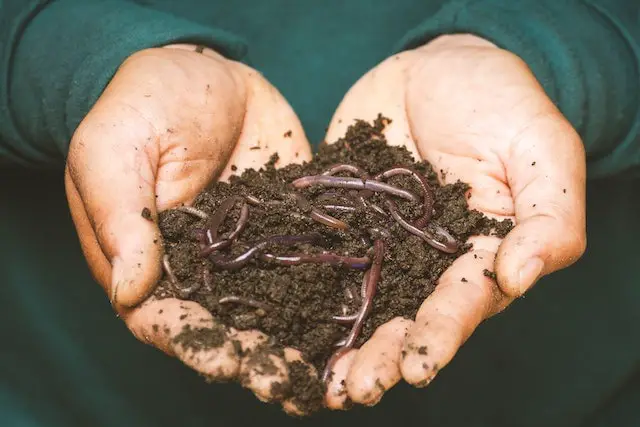
Yellowing of juniper plants can occur due to nutrient deficiencies. Nutrients such as iron, nitrogen, sulfur, zinc, magnesium, potassium, manganese, and molybdenum play a crucial role in the healthy growth of juniper plants. Deficiencies in these macronutrients can result in yellowing of the foliage.
A soil test can help determine which nutrient is lacking in the soil. Iron deficiency typically results in yellowing of the leaves between the veins, while nitrogen deficiency causes the lower half of the juniper to turn yellow. Sulfur deficiency causes discoloration along the upper half of the foliage.
Magnesium, potassium, and nitrogen deficiencies typically cause the lower half of the juniper to yellow, while manganese, molybdenum, and zinc deficiencies cause yellowing of the leaves between the veins.
To address nutrient deficiencies, fertilizers can be added to the soil to provide the necessary nutrients. However, excess fertilizer can also cause problems like yellowing foliage. It is important to use the right amount of fertilizer and to avoid overfeeding the plant.
Watering and Soil Conditions
Junipers require well-draining soil to prevent waterlogging and root rot. Overwatering can cause yellowing of the foliage and is a common cause of juniper decline. On the other hand, drought stress can also lead to yellowing and browning of the needles.
To prevent overwatering, it is recommended to water junipers deeply but infrequently. The frequency of watering will depend on the soil type, weather conditions, and the age of the plant. In general, newly planted junipers require more frequent watering than established ones.
Before watering, it is important to check the soil moisture level. This can be done by sticking a finger or a moisture meter into the soil. If the soil is still moist, wait a few more days before watering again. If the soil is dry, water the plant deeply until the water reaches the root zone.
In addition to proper watering, soil conditions also play a crucial role in the health of junipers. Junipers prefer slightly acidic to neutral soil with a pH range of 6.0 to 7.5. Soil that is too alkaline can lead to nutrient deficiencies, while soil that is too acidic can cause toxicity.
To maintain optimal soil conditions, it is recommended to perform a soil test every few years. This will help determine the pH level and nutrient content of the soil. If the pH level is too high or too low, amendments such as sulfur or lime can be added to adjust it.
Adding a layer of organic mulch around the juniper can also help maintain soil moisture and temperature, prevent weed growth, and improve soil structure. However, care should be taken not to pile the mulch against the trunk of the plant, as this can lead to moisture buildup and pest problems.
Influence of Seasonal Changes
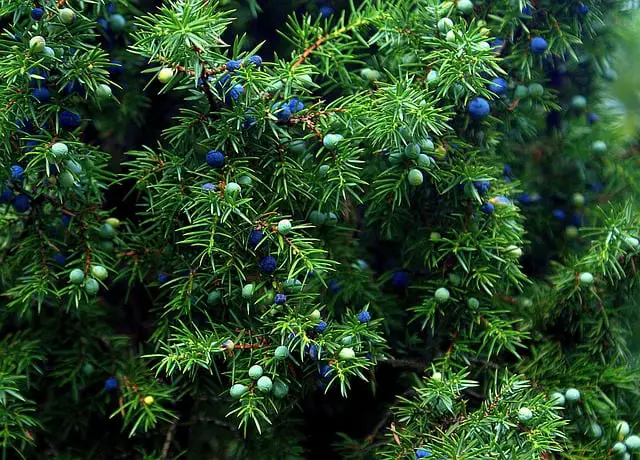
Juniper turning yellow can be influenced by seasonal changes. During winter, junipers tend to turn brownish or bronze. This is a normal occurrence as the plant goes dormant during this season. However, if the yellowing persists or worsens, it may indicate a more serious issue such as root rot or nutrient deficiency.
In spring, junipers begin to grow new foliage. It is important to ensure that the plant is receiving adequate water and nutrients during this time to support healthy growth. If the plant is not receiving enough water, it may turn yellow or brown. Additionally, if the plant is not receiving enough nutrients, it may also turn yellow.
During the heat of summer, junipers may also turn yellow due to heat stress. It is important to ensure that the plant is receiving enough water during this time, as well as some shade or protection from direct sunlight. Overwatering can also cause yellowing, so it is important to strike a balance.
Pest and Disease Management
When it comes to managing pests and diseases in junipers, prevention is key. Regularly inspecting the plant for signs of infestation and disease is crucial in catching any issues early on. Here are some common pests and diseases that affect junipers and how to manage them:
Pests
- Spruce spider mites: These tiny pests can cause yellowing and browning of needles. They thrive in hot and dry conditions, so keeping the plant well-watered and cool can help prevent infestations. Insecticidal soap or horticultural oil can be used to manage infestations.
- Juniper scale: These scale insects can cause yellowing and browning of needles as well as stunted growth. They can be managed with insecticidal soap or horticultural oil.
- Carulaspis juniperi: This scale insect can cause yellowing and browning of needles as well as twig dieback. Infestations can be managed with insecticidal soap or horticultural oil.
Diseases
- Phomopsis blight: This fungal disease can cause yellowing and browning of needles as well as twig dieback. Pruning infected branches and applying fungicides can help manage the disease.
- Kabatina twig blight: This fungal disease can cause yellowing and browning of needles as well as twig dieback. Pruning infected branches and applying fungicides can help manage the disease.
- Cedar-apple rust: This fungal disease can cause yellowing and browning of needles as well as twig dieback. Removing infected branches and applying fungicides can help manage the disease.
- Phytophthora root rot: This soil-borne fungal disease can cause yellowing and browning of needles as well as stunted growth. Improving soil drainage and applying fungicides can help manage the disease.
It is important to note that not all diseases and pests can be managed with fungicides or insecticides. Some diseases, such as Armillaria root rot, have no effective treatment and infected plants should be removed and destroyed to prevent the spread of spores.
Specific Juniper Issues
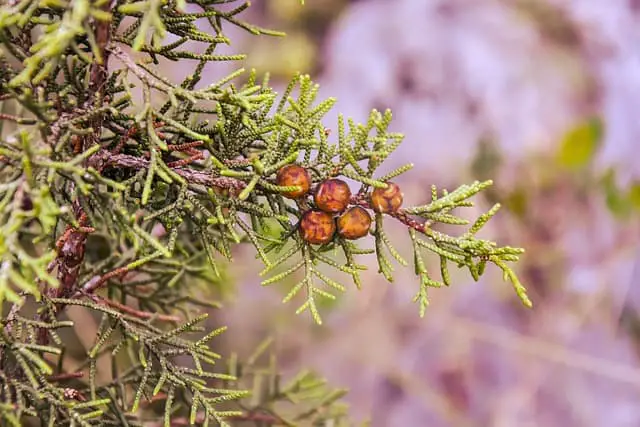
Junipers are known for their hardiness and resilience, but they can still be susceptible to a variety of issues that can cause them to turn yellow or brown. Some of the most common issues that can affect junipers include browning of needles, root rot, dieback, branch dieback, tip blight, kabatina blight, and phomopsis blight.
Browning of needles is a common issue that can occur when junipers are improperly planted or under stress from the environment. This can cause the needles to turn yellow or brown and eventually die.
Root rot is another issue that can cause junipers to turn yellow or brown. This is a fungal disease that can be caused by overwatering or poor drainage.
Dieback and branch dieback are issues that can occur when junipers are stressed or damaged. This can cause the branches to die back, turn yellow or brown, and eventually fall off.
Tip blight is another issue that can cause junipers to turn yellow or brown. This is a fungal disease that can be caused by poor pruning practices or environmental stress.
Kabatina blight is a fungal disease that can cause junipers to turn yellow or brown and develop white or yellow spots on the needles. This disease is most common in junipers that are vulnerable to stress, such as Juniperus chinensis and common juniper.
Phomopsis blight is another fungal disease that can cause junipers to turn yellow or brown and develop white or yellow spots on the needles. This disease is most common in junipers that are vulnerable to stress, such as Juniperus chinensis and common juniper.
Proper Juniper Care
Junipers are hardy evergreen shrubs that require minimal maintenance. However, providing proper care is essential for their growth and to prevent them from turning yellow. Here are some tips for proper juniper care:
1. General Care
Junipers prefer well-drained soil and full sunlight. They can tolerate a wide range of soil types, but soil that is too wet or too dry can cause yellowing.
Watering should be done deeply and infrequently, allowing the soil to dry out slightly between watering sessions. Overwatering can lead to root rot, which can cause yellowing and other problems.
2. Pruning
Pruning is essential to maintain the shape and size of junipers. It is recommended to prune junipers in late winter or early spring before new growth appears. Dead or diseased branches should be removed promptly to prevent the spread of disease. Pruning can also help improve air circulation and reduce the risk of fungal diseases.
3. Root Care
Healthy roots are essential for healthy junipers. Established trees can benefit from root pruning to stimulate new growth and improve nutrient uptake. This should be done in early spring or late fall. Mulching can also help retain moisture and prevent soil erosion around the roots.
4. Cultural Practices
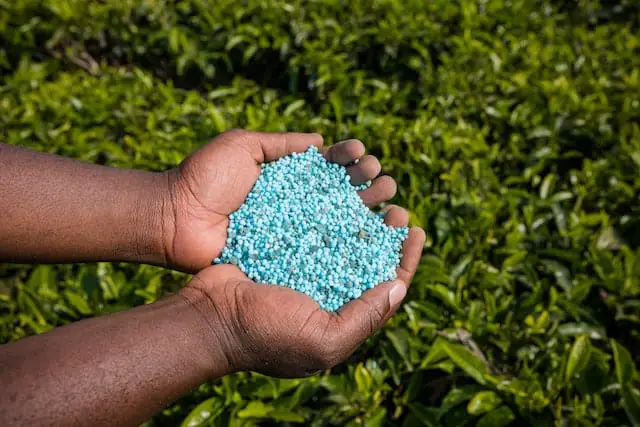
Proper cultural practices can help prevent juniper yellowing. Avoid planting junipers too close together, as this can lead to poor air circulation and disease.
Fertilizer should be applied sparingly, as over-fertilization can lead to yellowing and other problems. It is also important to monitor for pests and diseases and take prompt action to prevent their spread.
Miscellaneous Factors
There are several miscellaneous factors that can cause junipers to turn yellow. Here are some of the most common ones:
- Gin: If a juniper plant is used to produce gin, it can become stressed and turn yellow due to the harvesting process. However, this is not a common cause of yellowing junipers.
- Sap: If a juniper plant is damaged or pruned improperly, it can produce sap. This sap can cause the needles to turn yellow and eventually die.
- Extension: According to the University of Minnesota Extension, junipers can turn yellow due to a variety of factors, including insect infestations, nutrient deficiencies, and root rot. It is important to identify the underlying cause of the yellowing in order to treat it effectively.
- Sample: Sometimes, a sample of the yellowing juniper can be sent to a laboratory for analysis. This can help identify the specific cause of the yellowing and guide treatment options.
- Dog Urine: Dog urine can cause junipers to turn yellow and die. It is important to train dogs to avoid urinating on plants or to fence off the area to prevent damage.
- Salts: High levels of salts in the soil can cause junipers to turn yellow and eventually die. It is important to test the soil and avoid using fertilizers or other products that contain high levels of salts.
- Apple Trees: If junipers are planted near apple trees, they can become infected with cedar-apple rust. This can cause the needles to turn yellow and eventually die. It is important to avoid planting junipers near apple trees.
- Yew: If junipers are planted near yew, they can become infected with Phytophthora root rot. This can cause the needles to turn yellow and eventually die. It is important to avoid planting junipers near yew.
- Rodent Damage: Rodents can damage the bark and roots of junipers, which can cause them to turn yellow and eventually die. It is important to protect junipers from rodents by fencing off the area or using repellents.
Frequently Asked Questions
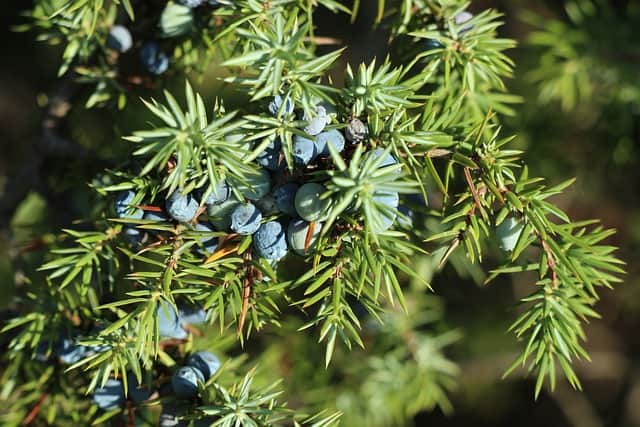
Why is my juniper turning brown?
Junipers can turn brown due to various reasons, including poor soil drainage, insufficient watering, and fungal diseases. Brown needles are usually a sign of dead or dying foliage.
If you notice brown needles on your juniper, it is important to identify the underlying cause and address it promptly.
Juniper turning light green?
If your juniper is turning light green, it may be a sign of nutrient deficiency in the soil. Junipers require a balanced supply of macronutrients and micronutrients to maintain healthy foliage.
A lack of nitrogen, phosphorus, or potassium can cause the needles to turn light green or yellow. You may need to fertilize your juniper to correct the issue.
Yellow tip juniper?
Yellow tips on juniper needles are often a sign of tip blight, a fungal disease that affects many species of junipers. The disease causes the tips of the needles to turn yellow, then brown, and eventually die.
If you notice yellow tips on your juniper, it is important to prune the affected branches and dispose of them to prevent the disease from spreading.
Juniper twig blight?
Juniper twig blight is a fungal disease that affects the twigs and branches of junipers, causing them to turn brown and die. The disease is most common in wet and humid conditions and can be prevented by ensuring proper air circulation around the plant.
If your juniper is affected by twig blight, you may need to prune the affected branches and apply a fungicide to prevent the disease from spreading.
How to fertilize juniper?
To fertilize juniper, you can use a balanced fertilizer that contains equal amounts of nitrogen, phosphorus, and potassium.
Apply the fertilizer in early spring before new growth begins and again in late summer to promote healthy foliage growth. Be sure to follow the manufacturer’s instructions for application rates and methods.
How to treat juniper tip blight?
To treat juniper tip blight, you may need to prune the affected branches and dispose of them to prevent the disease from spreading. You can also apply a fungicide to the remaining foliage to prevent further damage.
Be sure to follow the manufacturer’s instructions for application rates and methods and repeat the treatment as necessary.

Hey, I’m Lisa and I’ve been an avid gardener for over 30 years. I love writing, talking and living in the garden! Feel free to connect with me on my socials below

